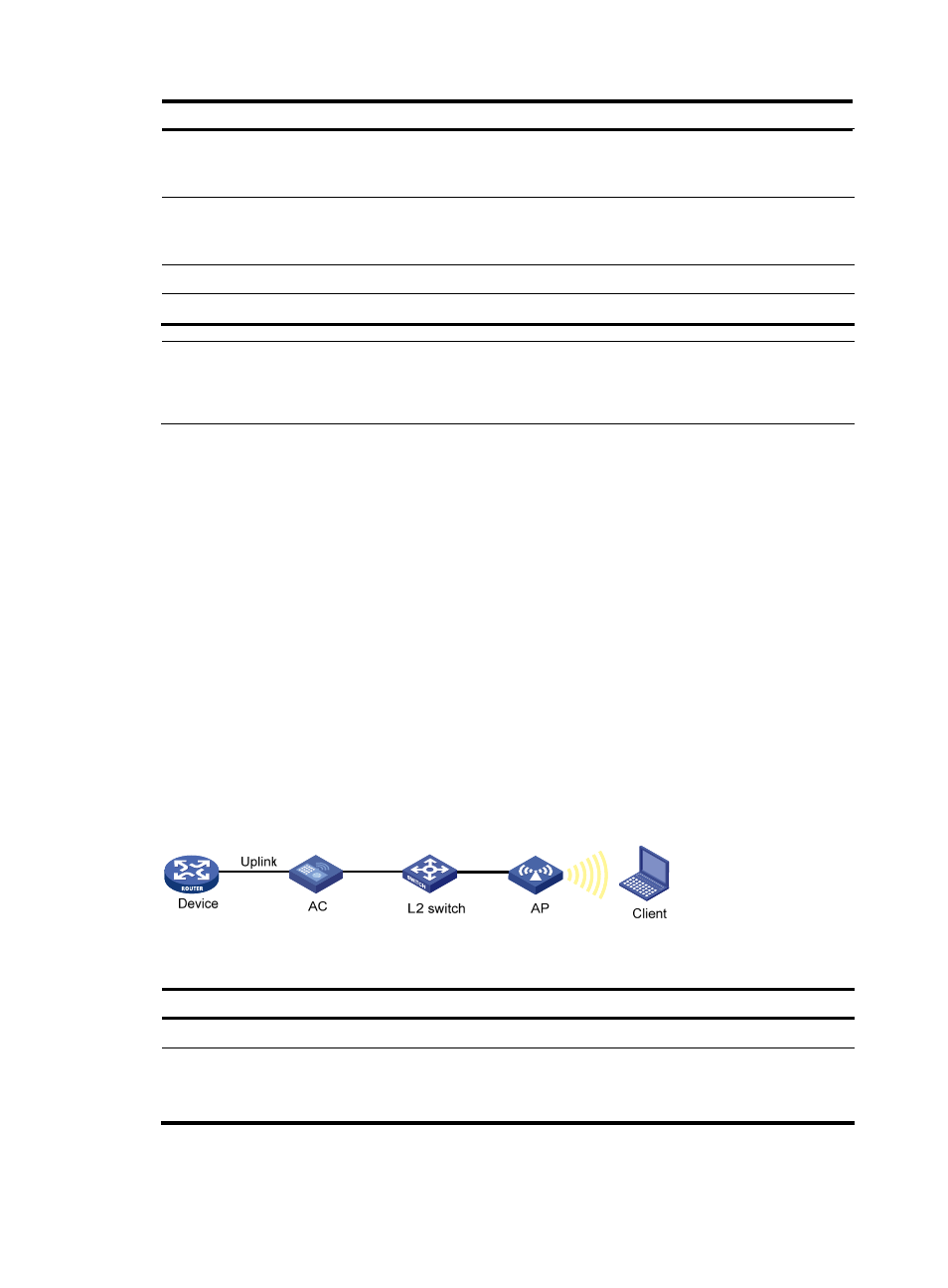Configuring uplink detection – H3C Technologies H3C WX3000E Series Wireless Switches User Manual
Page 44

32
Step Command
Remarks
2.
Enter user profile view. user-profile profile-name
If the specified user profile does not
exist, this command will create it and
enter its view.
3.
Specify a permitted
SSID.
wlan permit-ssid ssid-name
No permitted SSID is specified by
default, and users can access the
WLAN without SSID limitation.
4.
Return to system view. quit
N/A
5.
Enable the user profile. user-profile profile-name enable
Not enabled by default.
NOTE:
•
For more information about user access control, see
Security Configuration Guide.
•
For more information about user profile, see
Security Configuration Guide.
Configuring uplink detection
Configuring uplink detection
Uplink detection ensures that when the uplink of an AC fails, clients can access external networks through
APs connected to another AC whose uplink operates properly.
As shown in
, when the uplink of the AC fails, the uplink detection function can detect the failure
and disable the radio on the AP. If the uplink recovers, the AC enables the radio on the AP. To achieve
this purpose, you need to configure collaboration between NQA, track, and uplink detection:
•
When the track entry is in Positive state, the AC enables the radio of the AP. Wireless clients can
associate with the AP.
•
When the track entry is in Negative state, the AC disables the radio of the AP. Wireless clients
cannot associate with the AP.
•
When the track entry is in Invalid state, the AC does not change the radio state of the AP.
Figure 14 Uplink detection network diagram
To configure uplink detection:
Step Command
Remarks
1.
Enter system view.
system-view
N/A
2.
Specify a track entry to detect
whether the uplink is
reachable.
wlan uplink track
track-entry-number
Optional.
By default, no track entry is
specified.
- H3C WX5500E Series Access Controllers H3C WX3500E Series Access Controllers H3C WX2500E Series Access Controllers H3C WX6000 Series Access Controllers H3C WX5000 Series Access Controllers H3C WX3000 Series Unified Switches H3C LSWM1WCM10 Access Controller Module H3C LSUM3WCMD0 Access Controller Module H3C LSUM1WCME0 Access Controller Module H3C LSWM1WCM20 Access Controller Module H3C LSQM1WCMB0 Access Controller Module H3C LSRM1WCM2A1 Access Controller Module H3C LSBM1WCM2A0 Access Controller Module H3C WA3600 Series Access Points H3C WA2600 Series WLAN Access Points
